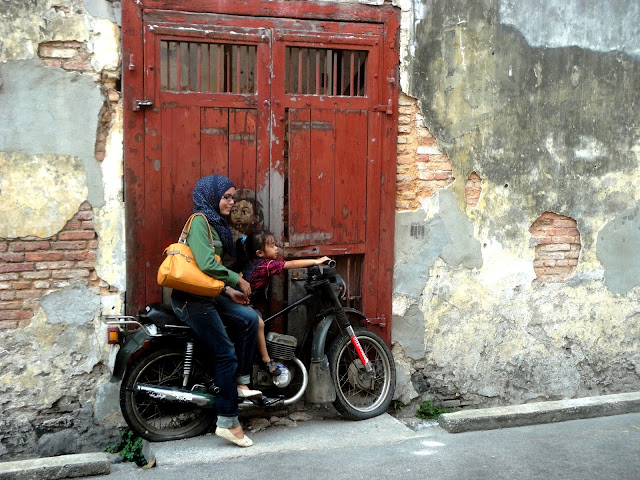29. George Town: Pushing the Fast-Forward Button
What do you do if you're a city that already has a pretty good core of street art, but you want more, more, more - both in quality and in quantity? Well, if you're George Town, Malaysia you invite 16 of the best local and international street artists and set them loose on your blank walls. That's exactly what George Town did in 2014, under the umbrella "Urban Exchange: Crossing Over."
As luck would have it, we were in Penang just a couple of months after the festival, so we saw the murals in relatively pristine form. The most colourful ones by far were those brought to life by Brooklyn's Elle, a graffiti artist turned muralist. Her work, as always, was big and bright - maybe that's what you have to do to get noticed in New York:
Local artist Bibichun was no slouch in the colour department either, whether working on his own:
Or as a member of 4Some Crew, :
Elle's Australian friend, Vexta, created the mural that we saw first and most often, perhaps close to 50 times. That's because it covered the enormous side wall of our hotel. Like much of her work, it has a dreamlike quality to it as she tries to connect the dots between the personal and the universal:
Vexta's second mural was the complete opposite: small, well-hidden in a garage, and we were lucky to have spotted it even once:
Antanas Dubra, from Vilnius, Lithuania, contributed a pair of portraits on buildings across the street from each other. Both portraits were caricatures of the artist himself.
American Addison Karl added a more sombre note to the proceedings:
As did Australian Rone, who says he tries to capture the friction point between beauty and decay:
Tank Petrol is a Polish street artist who relocated to Manchester, UK. He actually was a tank gunner and tank driver in the army. Like many of his other works, his mural in Penang contains a woman surrounded by animals and geometric forms like upside-down triangles:
And last but not least, Ernest Zacharevic, who launched the George Town street-art movement in 2012, teamed up with Etoja on this rather unusual piece:
Penang is now one of the world capitals for street art, and it's onward and upward for this Malaysian town.




















































